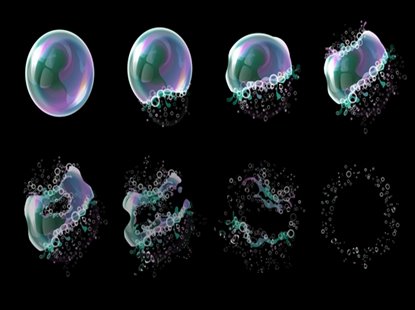Picking the Right Defoamer for Your Particular Application Needs
Choosing the suitable defoamer for particular application needs is a nuanced procedure that requires cautious consideration of several aspects, such as the foam operating, medium, and type conditions. Understanding the subtleties of defoamer performance-- consisting of speed and perseverance-- while also accounting for ecological and governing elements is crucial.
Comprehending Foam Formation
Foam formation occurs when gas is caught within a fluid, developing a steady framework of bubbles. This sensation can considerably affect various commercial processes, particularly in industries such as food production, drugs, and wastewater treatment. The visibility of foam can impede mixing, reduce product high quality, and also cause functional inadequacies.
Foam generally forms as a result of a mix of factors, consisting of surface-active agents, anxiety, and the characteristics of the fluid phase. Surfactants lower the surface area tension of the fluid, facilitating the formation of bubbles that can support and coalesce. Frustration, whether from mechanical stirring or gas introduction, boosts bubble development, resulting in raised foam volume.
Recognizing the technicians of foam formation is critical for industries intending to optimize their processes. By recognizing the specific conditions that advertise foam generation, organizations can implement techniques to reduce its effects.
Types of Defoamers Available
Numerous kinds of defoamers are offered to deal with the challenges postured by foam in commercial applications. defoamers. Broadly categorized, defoamers fall into three classifications: silicone-based, non-silicone-based, and all-natural defoamers
Silicone-based defoamers are renowned for their effectiveness and stability throughout a wide variety of temperatures and pH degrees. They are normally used in applications where solid foam suppression is essential, such as in paints, adhesives, and coatings. Their low surface area stress allows for fast foam collapse.
Non-silicone-based defoamers, often made from natural substances, provide an alternative for applications conscious silicone residues. These defoamers can be more split right into polyether and ester types, each tailored to fulfill particular formulation demands. Non-silicone defoamers are regularly made use of in food handling and individual care items as a result of their compatibility with various formulas.
All-natural defoamers, originated from plant or pet sources, are acquiring grip as a result of their environmentally friendly account. These items are specifically appealing in applications where governing compliance and sustainability are paramount, such as in agrochemicals and biotechnology.
Picking the right kind of defoamer is important for optimizing efficiency and guaranteeing compatibility with details applications.
Secret Application Considerations
When choosing a defoamer, it is necessary to take into consideration the details application requirements to ensure optimal performance. defoamers. Various industries have distinctive demands, such as food handling, drugs, or wastewater therapy, and each application may need special defoaming homes
Trick factors to assess include the medium in which the defoamer will be utilized, whether it is water-based, oil-based, or a combination thereof. The temperature and pH levels of the application can additionally considerably affect the efficiency of a defoamer. Additionally, compatibility with various other chemicals present in the system is essential to stop adverse responses that might compromise efficiency.
Another important factor to consider is the foaming actions of the details system. Comprehending whether the foam develops quickly or gradually can assist the selection of a defoamer that targets the origin effectively. In addition, the preferred rate of defoaming can affect the option, as some applications require quick action while others might endure slower defoaming processes.
Last but not least, governing and ecological considerations ought to not be ignored, especially in markets with stringent compliance requirements. Picking a defoamer that aligns visit their website with these aspects ensures both effectiveness and security in the application.

Performance Screening Methods
Assessing the efficiency of a defoamer requires a systematic strategy to testing that properly measures its efficiency in particular applications. Numerous performance testing methods can be used to determine the optimal defoamer for a provided formula.
One usual method is the bubble examination, which reviews the defoamer's ability to reduce foam quantity over pop over here time. This examination includes generating a steady foam and after that including the defoamer to observe the rate of foam collapse.

Eventually, picking the proper efficiency testing approach depends upon the particular application and the sort of foam being dealt with. Each method uses useful data that can assist formulation changes and improve the efficiency of the defoamer in sensible applications.
Ideal Practices for Selection
.png?width=250&height=140&name=35722%20BOR%20Defoamers%20Ad_V8-BACKGROUND%20(2).png)

Following, consider the defoamer's efficiency in regards Homepage to rate of activity and determination. A quick-acting defoamer might be essential for procedures where rapid foam suppression is crucial, while an extra persistent formula may be needed for prolonged foam control. Furthermore, evaluate the environmental influence of the defoamer, including its biodegradability and any type of regulatory conformity needs.
Conduct tests with selected defoamers to determine their performance in real-world problems. This action is important to verify that the selected item meets efficiency assumptions. Finally, seek advice from makers or suppliers for technological assistance and advice, as they can give important understandings right into product formulas and application strategies. By adhering to these ideal techniques, you can improve foam control performance and guarantee the long life of your processes.
Final Thought
In recap, selecting the suitable defoamer requires an extensive analysis of different factors, consisting of foam type, tool, operating conditions, and ecological considerations. Recognizing the distinct features of foam formation and the readily available defoamer choices is crucial.
Picking the appropriate defoamer for details application needs is a nuanced procedure that demands cautious factor to consider of multiple aspects, such as the foam operating, type, and tool conditions.Picking the best defoamer is vital for attaining ideal performance in foam control applications. A quick-acting defoamer may be needed for procedures where quick foam suppression is essential, while a more consistent solution might be needed for extended foam control.In recap, picking the suitable defoamer requires a comprehensive assessment of numerous variables, including foam type, tool, operating problems, and ecological considerations. Comprehending the unique features of foam formation and the readily available defoamer options is vital.